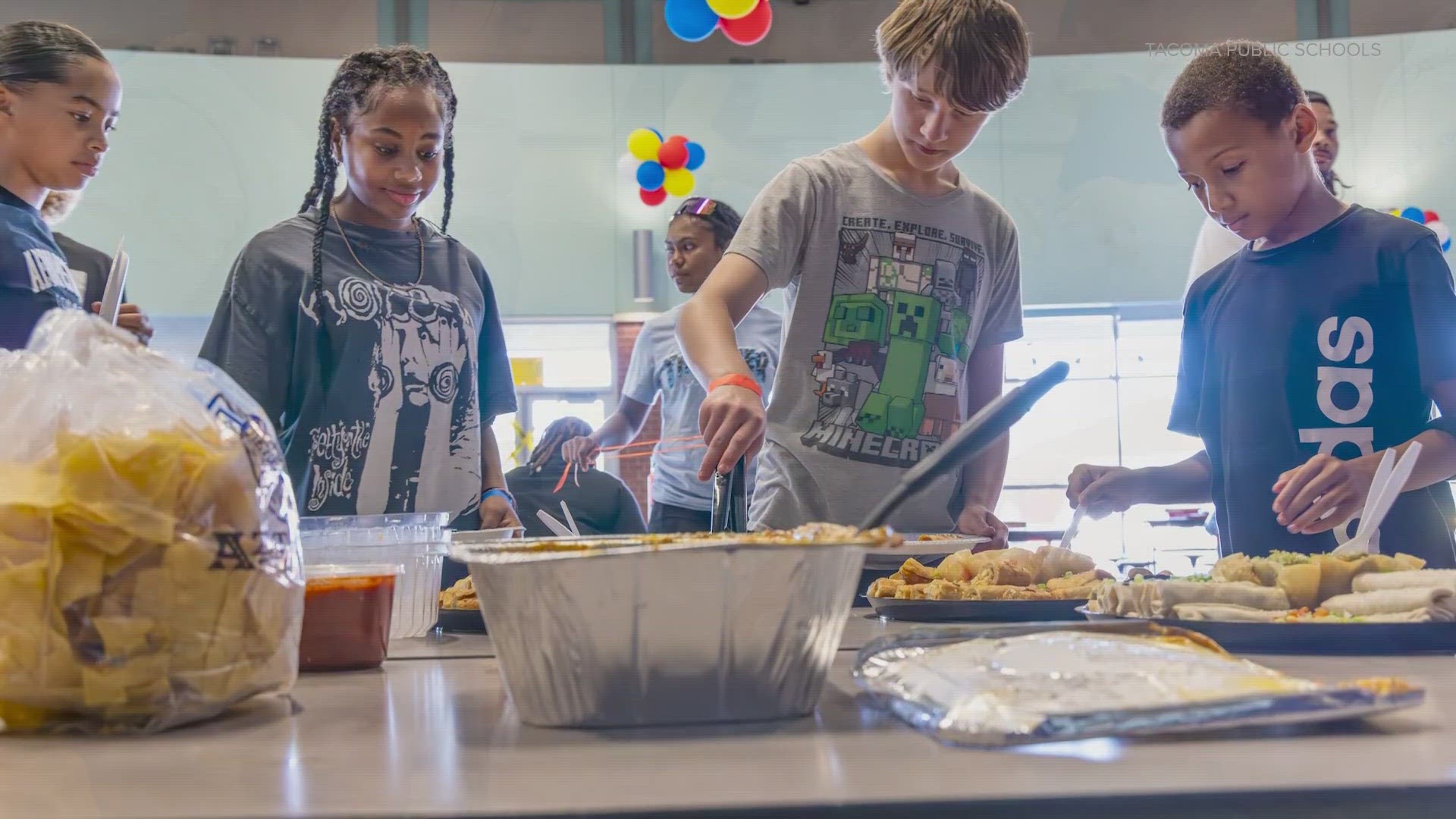TACOMA, Wash. — Some parts of western Washington are seeing a rise in youth crime. There are more shootings and more stolen cars in areas like Tacoma.
It’s why leaders in the city and Tacoma Public Schools started a program called Teen Summer Late Nights.
Every weeknight over the summer from 5-10 p.m., middle and high school students could show up to community centers and schools to hang out, play, and eat.
One of the 12 locations is the Eastside Community Center.
"Youth need these spaces more than ever, because they were locked in the very spaces that birthed their traumas," Community Center Supervisor Antonio McLemore said of students during the pandemic.
Summer Late Nights is a coordinated effort to keep kids out of trouble and give them a safe space.
“There was a need to come together to recalibrate and say do we put our students first? What does that look like,” Tacoma Public Schools Superintendent Josh Garcia said.
The latest data from the prosecutors’ office shows youth crime is up in Pierce County. Last year there were nine murders or attempted murders committed by juveniles, and this year there are already eight. This calendar year there are nearly 40 more robberies than in 2022 that involved youth.
Eastside Community Center has a basketball gym, indoor pool, and even a recording studio. In Tacoma they’ve built the facilities, but what McLemore said still needs work are the relationships.
"Where that kid lives in proximity to where that program is they're going to see that gang leader 10 times before they ever show up for that program,” McLemore said. “They have the relationships. So, I think we need to be that intentional when engaging young people."
"It's still hot so I think it's our job to manage that temperature, but also engage with the young folks to see what we can do to keep you out of certain situations. They'll tell you," Vice President of the Tacoma School Board Korey Strozier said.
More than 1,100 students signed up for Summer Late Nights. An average of 261 kids showed up every night, as of late August.
It’s also given an opportunity for community organizers to learn about students and their needs.
McLemore said those between 11-14 are a critical age for them to work with.
“If we think of schools as a set place where some kind of curriculum is happening in isolation to the rest of the world we’re making a mistake,” Garcia said. “We’re trying to link schools and community 24/7 365 days a year to say who are we together?”
However, the community leaders are not naïve. They know one summer of progress is just the start.
"There are folks that do this work day in and day out summer, spring, winter and fall,” Strozier said. It’s our job now to lean into the expertise that already exists, and then also promote those spaces with the same energy we promoted Summer Teen Late Nights."

